Best Potbelly Stoves 2025
- October 26, 2023
- 3 comment
The potbelly stove is more than just a heating appliance; it is a testament to a bygone era, encapsulating moments of shared warmth, storytelling, and simpler times. Its characteristic rotund design, reminiscent of a potbelly, transports us back to the days of old train stations, cozy inns, and bustling general stores, where the glow from these stoves provided comfort to weary travelers and townsfolk alike. Their presence not only offered a practical solution to combat chilly weather but also served as communal gathering points, where tales were exchanged, and bonds were forged.
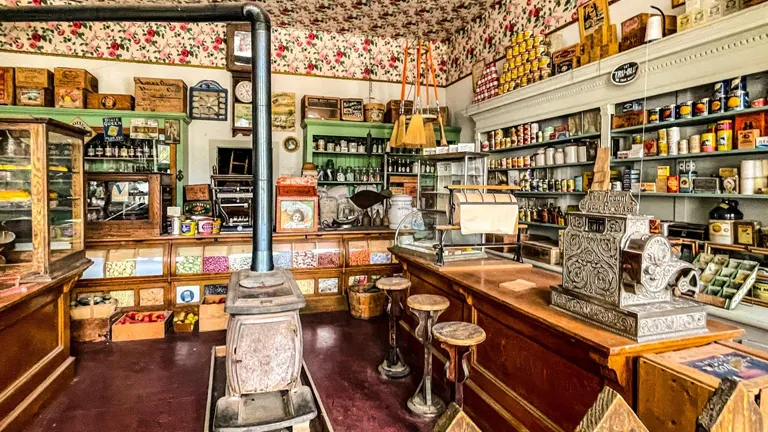
For modern homeowners with an affinity for history and a desire for efficient heating, potbelly stoves offer a unique blend of the old and new. As the demand for these timeless pieces grows, various models have emerged in the market. To assist in navigating these choices, we have curated a selection of the three finest potbelly wood stoves available today, ensuring a seamless blend of nostalgia and performance.
What is a Potbelly Stove?
A potbelly stove is a cast-iron, coal-burning, or wood-burning stove that is cylindrical with a bulge in the middle. The name is derived from the resemblance of the stove to a fat person’s pot belly. Potbelly stoves were used to heat large rooms and were often found in train stations or one-room schoolhouses.
1. Vogelzang PB65XL Railroad Potbelly Stove
Rating: ★★★★★
The Vogelzang PB65XL Railroad Potbelly Stove is an elegant nod to the past, beautifully capturing the essence of the classic potbelly stoves that once warmed the train stations of yesteryear. Crafted with rugged cast iron, it doesn’t just serve as a heating source but also as a focal point in any room, invoking feelings of nostalgia and charm.
The Vogelzang PB65XL Railroad Potbelly Stove is a testament to versatility and efficiency. Designed to burn both wood and coal, it offers flexibility in fuel choice. It boasts an impressive heating capacity of up to 65,000 BTUs, making it suitable for medium to large-sized rooms or open-concept areas spanning up to 1,200 sq. ft. Functionality and nostalgia combine seamlessly with features like the 8″ lift-out cook lid, reminiscent of historical multifunctional stoves, and a raised 6″ diameter cooking surface for added versatility.
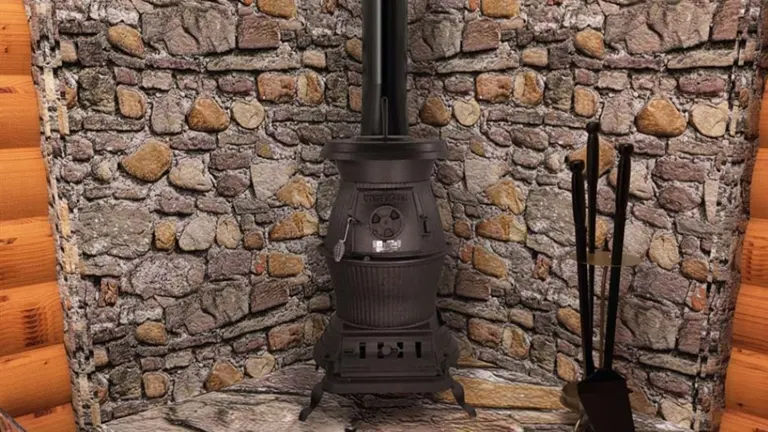
Furthermore, its generous coal capacity of up to 40 lbs ensures extended burn times and fewer interruptions for refueling. Although it has a preference for smaller log lengths, this is characteristic of potbelly designs and is a nod to their historical use in confined spaces. With dimensions of 34 inches in height, 22 inches in width, and 20 inches in depth, it presents a compact design ideal for various spaces. And, while it’s EPA-exempt, its all-cast iron construction guarantees efficient heat radiation, ensuring a warm and cozy environment during the colder months.
Verdict
The Vogelzang PB65XL Railroad Potbelly Stove is more than just a heating appliance; it’s a conversation piece, a bridge between the past and present. Its robust performance, coupled with its vintage aesthetics, makes it a worthy addition to homes that cherish both warmth and history. Whether you’re burning wood or coal, this stove promises to deliver reliable warmth while evoking memories of a bygone era.
2. Clarke Cast Iron Stove Pot Belly Standard
Rating: ★★★★☆
The Clarke Cast Iron Stove Pot Belly Standard seamlessly marries practicality with a classic design. Cast in a deep, rich iron, it emanates a sense of traditional elegance and ruggedness. Its design is reminiscent of a simpler time, making it a standout feature in any space.
The Clarke Cast Iron Stove Pot Belly Standard is a compact yet powerful heating solution that exemplifies efficiency and versatility. Despite its modest size, this potbelly stove boasts a significant burning volume, accommodating not only wood but also off-cuts and waste wood, making it a sustainable and economical choice. With a commendable heat output of approximately 6.9 kW, it ensures rooms remain warm and cozy. The front door simplifies refueling, while the rotating butterfly-style flue damper paired with the base air inlet facilitates seamless control over the burn rate for optimal warmth.
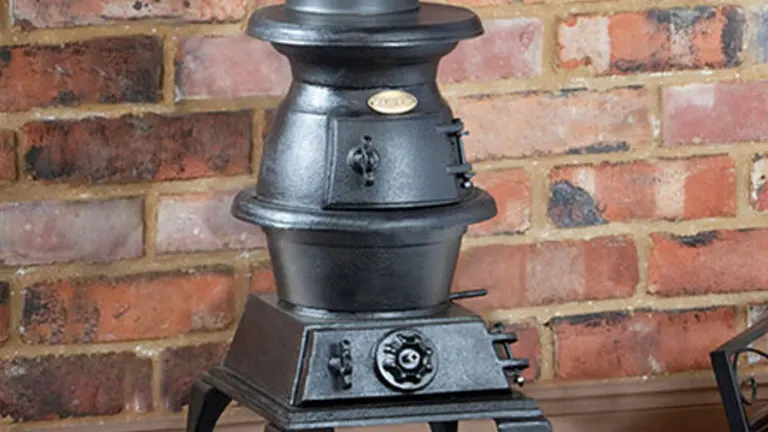
A standout feature is its adaptability for smaller settings—be it a cozy living space, a rustic cabin, or even a houseboat. However, potential users on boats or barges should adhere to the BC 8511:2010 regulations for safety. Its dimensions of 340 x 360 x 630mm and weight of 17.6 kg make it easy to install and fit in diverse spaces without appearing intrusive. The added benefit of a heavy-duty removable grate ensures ease of cleaning, and its 117mm diameter top exiting flue connector, compatible with the standard 5″ stove pipe, promises hassle-free integration with most setups.
Verdict
The Clarke Cast Iron Stove Pot Belly Standard is a testament to the fact that good things often come in small packages. For those with limited space but an unwillingness to compromise on warmth, aesthetics, or efficiency, this stove is an ideal choice. Its capacity to burn a range of materials not only makes it eco-friendly but also wallet-friendly in the long run. A timeless piece, it’s sure to be a cherished addition to any home or vessel.
3. US Stove 1869 Caboose Potbelly Coal Stove
Rating: ★★★★★
The US Stove 1869 Caboose Potbelly Stove draws inspiration from the iconic potbelly stoves that once adorned train stations and cabooses. Sporting a design that evokes a strong sense of nostalgia, this model is constructed entirely of cast iron, lending it both durability and a timeless appeal.
The US Stove 1869 Caboose Potbelly Stove offers a harmonious blend of old-world charm and modern efficiency, tailored especially for coal enthusiasts. Delivering a potent BTU rating of up to 80,000, it has been meticulously crafted to ensure optimal combustion with its significant firepot capacity, capable of holding and burning 40 lbs. of coal for a notable eight hours. Convenience is at the forefront of its design, evident from the 8″ lift-out lid that facilitates top-loading and the multifunctional flared top that doubles as a cooking surface, welcoming a fry pan or tea kettle.
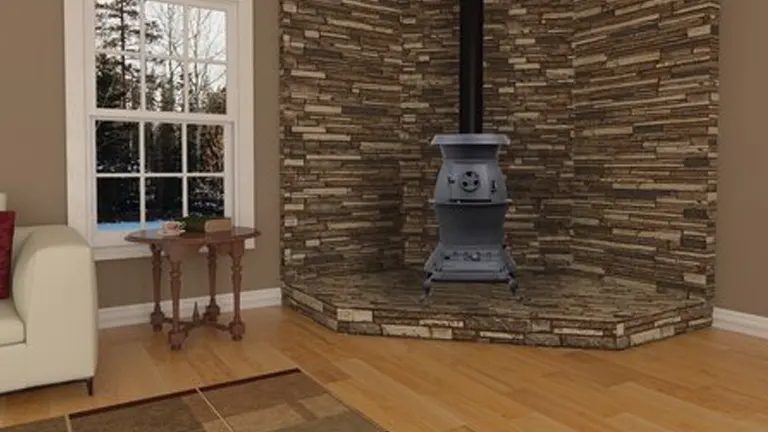
Maintenance is also streamlined with a strategically placed ash door and tray. Even though it’s EPA-exempt for coal burning, safety isn’t compromised, with features like a cool-touch spring handle standing testament. This solid cast iron stove, with dimensions of 36 x 21.6 x 19.5 inches and weighing around 200 lbs, promises longevity while radiating heat efficiently. The integrated draft controls on both feed and ash doors, along with an included pedestal base, further accentuate its functionality and aesthetic appeal.
Verdict
The US Stove 1869 Caboose Potbelly Stove beautifully marries tradition with functionality. Its robust construction, coupled with its high-performance capabilities, makes it a valuable addition to any space. Whether you’re seeking efficient heating, a touch of history, or both, this potbelly stove stands out as a worthy contender. Its design harks back to a bygone era, but its performance and features are very much rooted in the present, making it a fantastic blend of the old and the new.
The Evolution and Decline of Pot-Belly Stoves
Before the age of modern wood stoves with expansive fire-viewing windows, various kinds of wood burners were the go-to heating sources. Among these, none were as iconic or as versatile as the pot-belly stove. Its signature design, reminiscent of a plump belly, was usually constructed from cast iron, with a pronounced, rounded section for loading firewood or coal. These quintessential stoves, common throughout the 20th century, could typically burn both wood and coal.
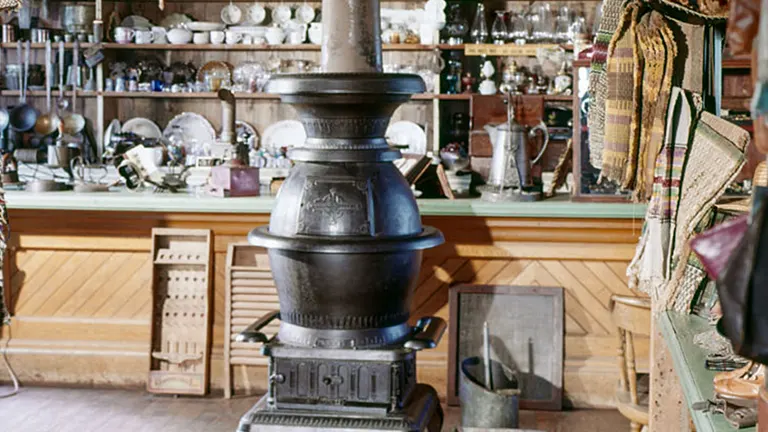
The pot-belly stove, a symbol of the past century, has etched itself into the annals of nostalgia. It’s challenging to envision the world of wood stoves without the pot-belly leading the charge. Their timeless allure is evident in countless photographs and on renowned home design platforms like Houzz, Pinterest, and Porch. Although its golden age has waned, the pot-belly stove’s legacy remains, reminiscent of a legendary athlete that marked an era.
What led to the decline of these iconic stoves? The answer, succinctly, is the EPA. The Environmental Protection Agency established pollution standards for the wood-burning sector, compelling manufacturers to devise innovative techniques for efficient wood burning and smoke reduction. These adaptations, termed ‘secondary combustion,’ were essential to adhere to these stringent norms. As these guidelines evolved and became tighter, many small-scale stove manufacturers struggled to comply, compelling them to either innovate or cease operations. The traditional design of the pot-belly stove couldn’t meet these cleaner standards.
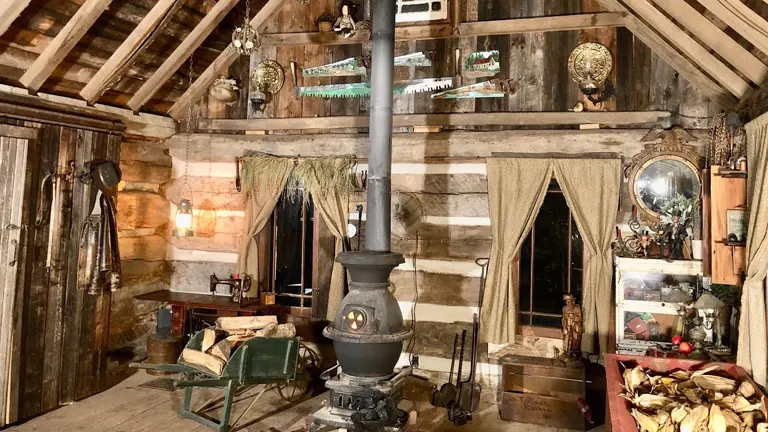
Further, evolving building regulations and insurance constraints made the installation of older, non-compliant wood stoves increasingly challenging. High clearance distances were mandated for older stoves, and some insurance policies wouldn’t cover them at all. This relegated the pot-belly stove to more of a collectible status than a functional unit. Though some avid DIY enthusiasts managed to navigate these restrictions, for the majority, the pot-belly stove ceased to be a feasible heating option.
Contemporary aesthetic preferences also played a role. Brands revered for their classic designs, such as Jotul, Hearthstone, and Vermont Castings, have shifted towards producing stoves with a modern flair. Consumers today prefer clear, glass doors that offer unhindered views of the dancing flames, a departure from the solid cast-iron fronts of yesteryears. This shift has driven manufacturers to prioritize modern designs over retrofitting older models to meet EPA guidelines.
Taking all these factors into account reveals a multifaceted explanation. While pot-belly stoves are undeniably iconic relics of the 20th century, today’s world has different expectations and limitations. If you chance upon one in an antique shop or an estate sale, it might be a worthy acquisition for the sheer nostalgia, but it’s essential to understand its place in today’s context.
Why You Should Buy a Potbelly Stove
- Historical Charm: A potbelly stove instantly adds a touch of nostalgia to any space, evoking memories of bygone eras and lending character to a room. Its distinct design serves as both a conversation starter and a connection to the past.
- Efficient Heating: Despite their old-world charm, potbelly stoves are known for their effectiveness in warming spaces. Their design facilitates better heat radiation, ensuring that the heat spreads uniformly throughout the room.
- Dual Fuel Option: Many potbelly stoves offer the flexibility to burn both wood and coal. This dual-fuel capability allows you to choose your preferred fuel source based on availability and cost.
- Compact Design: Thanks to their design, potbelly stoves are typically compact, making them perfect for spaces where room is a premium, such as cabins, smaller homes, or even houseboats.
- Cooking Capability: Some potbelly stoves come equipped with a flat top surface that can be used for cooking or boiling water, adding an extra layer of functionality.
- Economical: If you have access to affordable wood or coal, running a potbelly stove can be more cost-effective than relying on gas or electric heating systems.
- Sustainable Heating: For the environmentally conscious, burning wood is a renewable resource, especially when sourced from managed forests. This can reduce one’s carbon footprint when compared to fossil fuels.
- Durability: Many potbelly stoves are made of cast iron, a material known for its durability and longevity. With proper care, these stoves can serve your heating needs for many years.
- Independence from Power Grid: A potbelly stove doesn’t rely on electricity, making it an excellent backup heat source during power outages.
- Ambiance: Beyond its practical uses, a potbelly stove offers an unparalleled cozy ambiance. The flicker of flames behind the stove’s door creates a warm, inviting atmosphere that electric or gas heaters can’t replicate.
FAQs
- Did potbelly stoves serve purposes other than heating?
Absolutely! Many were used for cooking and boiling water, making them versatile fixtures in homes and other spaces like train stations. - Why are potbelly stoves often associated with train stations and schoolhouses?
Due to their compact size yet effective heating capabilities, they were ideal for heating public spaces like train depots and small classrooms. - Is it true that potbelly stoves can burn multiple types of fuel?
Yes, while many were designed primarily for wood, some could burn coal or a combination of both. - How do potbelly stoves compare in efficiency to modern stoves?
While charming and historically significant, many potbelly stoves aren’t as efficient as modern wood stoves, which often feature advanced combustion technology. - What’s the story behind potbelly stoves and sailors?
Many sailors used potbelly stoves onboard ships as they were compact and could be anchored securely, providing essential heat during cold voyages. - Can a potbelly stove be used outdoors?
While primarily an indoor heating solution, some people use potbelly stoves in outdoor settings like patios or outdoor kitchens, provided they’re shielded from direct rainfall. - Is it possible to use a potbelly stove for smoking food?
Some enthusiasts use potbelly stoves for cold-smoking meats and cheeses by controlling the burn rate and using wood chips for flavor. - Do potbelly stoves contribute to indoor air pollution?
Like all wood-burning appliances, potbelly stoves can produce indoor air pollutants if not operated correctly or if the chimney isn’t adequately vented. - Why are potbelly stoves often seen as collectible items today?
Their distinctive design, rich history, and association with a bygone era make them sought-after items for antique enthusiasts and those seeking a nostalgic ambiance. - Can I still find parts for an antique potbelly stove?
While some parts might be challenging to find, many enthusiasts and specialty shops offer parts or can guide you to reproductions that fit vintage models.
Hey there, fellow potbelly stove enthusiasts! We’ve taken a fun journey through the best potbelly stoves 2025 has to offer, and we hope you’re as excited as we are about these cozy heaters with a splash of nostalgia. Whether you’re a potbelly pro or just discovering their charm, we’d love to hear from you. Do you have a fun story, a burning question, or maybe a stove recommendation? Drop it in the comments! Let’s keep the conversation going and share our potbelly love. After all, there’s nothing like a warm chat around a warm stove, right?

David Murray
Forestry AuthorI'm David Murry, a forestry equipment specialist with a focus on chainsaw operation. With over 13 years of experience, I've honed my skills in operating and maintaining a wide range of machinery, from chainsaws to log splitters. My passion for the outdoors and commitment to sustainable forestry drive my work, which emphasizes safety, efficiency, and staying updated with industry advancements. Additionally, I'm dedicated to sharing my expertise and promoting environmental awareness within the forestry community.
3 comments
Great article.
Mal
October 27, 2023 1:00 pmLooking for the exhaust system for my cast iron stove

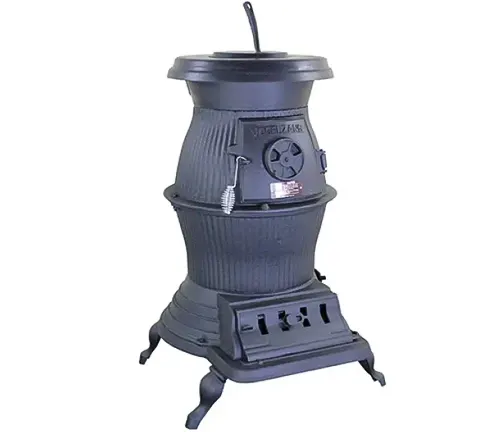
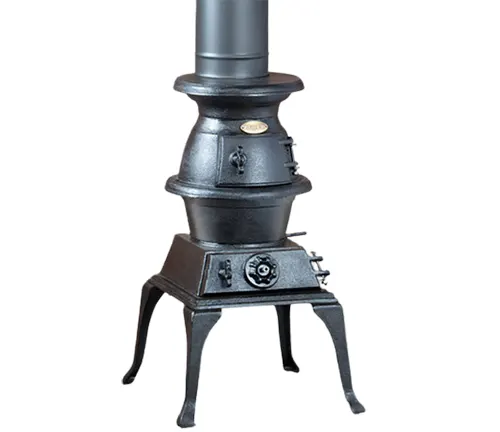
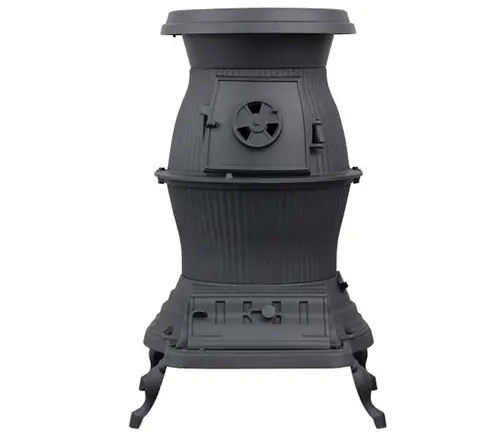












Back in the 60s, as a young child, I remember feeding wood logs into the potbelly stove we had in the living room out in a ranch in Southern Arizona. Would be interested in purchasing one, just for the good old memories.
Monty Smith
October 31, 2023 3:02 am